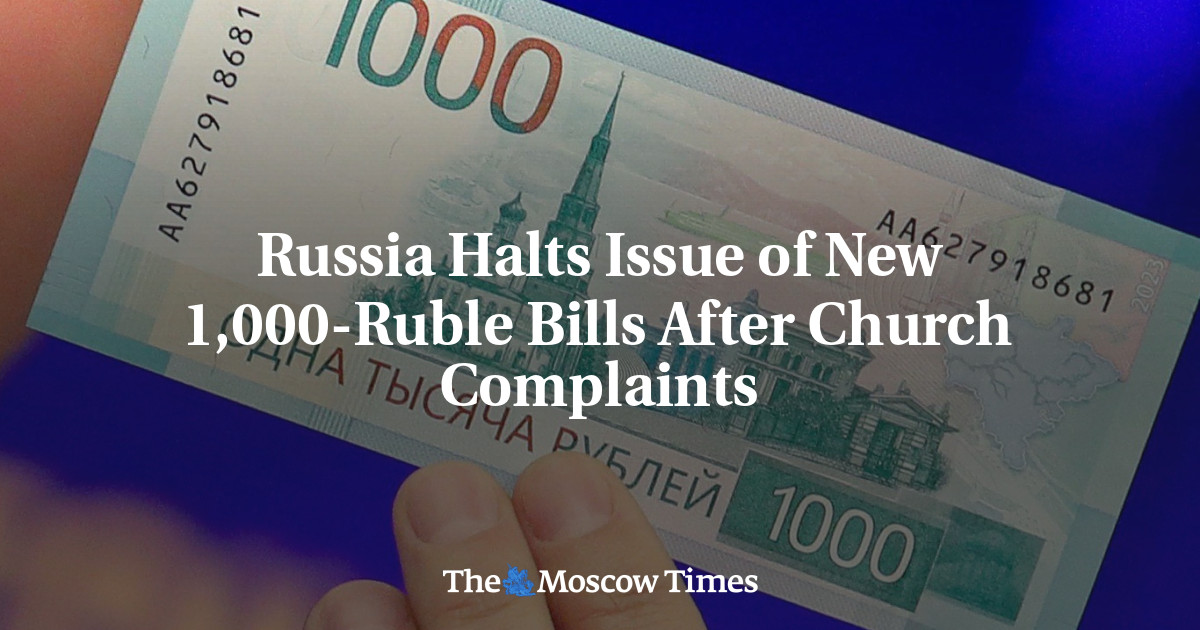
Russia’s Central Bank has suspended the issue of the new 1,000-ruble bill, whose design depicts a museum housed in a former Orthodox cathedral next to a tower topped with the Muslim crescent, following complaints from members of the Russian Orthodox Church.
In a short press release, the Bank said it would stop issuing the bills until the design was finalized, adding that the notes had not reached widespread circulation.
The Bank previously announced the issue of new 1,000 ($10) and 5,000 ruble ($50) bills with “modern design” and stronger security features on Monday.
The 1,000 ruble bill was dedicated to Nizhny Novgorod and the Volga Federal District and featured Kazan’s Söyembikä Tower and the Museum of the History of Tatar Statehood and the Republic of Tatarstan among other landmarks on the back.
Kazan is the capital of Russia’s republic of Tatarstan, which is home to some 2 million ethnic Tatars who largely worship Islam.
The museum is located in a domed former Orthodox church whose cross was reportedly removed by the Soviets. The Söyembikä Tower, which is also a museum, is topped with a Muslim crescent. Both buildings are on the grounds of the Kazan Kremlin.
This contrast drew the ire of Orthodox figures including priest Pavel Ostrovsky, who wrote to his nearly 175,000 Telegram subscribers that the design would bring religious discord.
According to Ostrovsky, the design “will simply be a dome without a cross and a minaret with a crescent” for 99% of Russians, who he claimed do not know the history of the Kazan Kremlin.
He added that there were only two possible reasons for the design choice: “unacceptable” stupidity on the part of the designers or “a deliberate provocation, which has been encountered before from adherents of Islam from Tatarstan.”
However, Orthodox Church representative Vakhtang Kipshidze told the RBC news website that the bank note’s design is not blasphemous as the building in question is currently a museum and not a working church.
Kamil Samigullin, Tatarstan’s Muslim spiritual leader, called for tolerance toward Russian Muslims and noted that other banknotes feature the Orthodox cross but not the Muslim crescent.
“If we want to create a healthy society, then we must be truly tolerant, not just in words,” Samigullin told local media. “We have a lot of Muslims; why can’t we have both crescents and crosses? This is quite normal, obviously. It is illogical to add a cross where there is none and remove a crescent from where it stands. Hostility will lead to a ban on looking at the sky — there is a crescent moon there, too.”